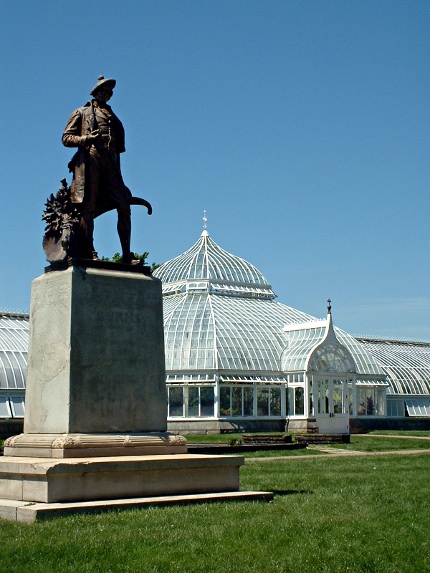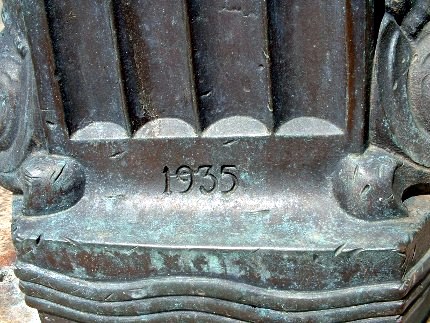
In the early evening, the Frick Park gatehouse at Reynolds Street and Homewood Avenue seems like the portal to an enchanted forest.


Robert Burns stands guard in front of the Victoria Room at Phipps Conservatory. Schenley Park is full of unexpected statues around every corner.

Dame’s Rocket (Hesperis matronalis) lights up the hillsides of Pittsburgh in late spring. Pittsburghers commonly refer to it as “phlox,” but it’s actually a member of the crucifer or mustard family, as you might guess by its four petals in a cross shape. It’s a foreign invader, a descendant of garden flowers brought by the first European settlers. But who can object to a weed as beautiful as this? The flowers commonly come in a range of colors from vivid purple through pink to white, but some patches have bicolor flowers delicately spattered with color in an infinite variety of patterns.




In the 1930s, the great Frank Vittor, who had absorbed more than a little of the Art Deco spirit, designed the standard drinking fountain for Pittsburgh city parks. The main design, appropriately enough, was a classical dolphin (which looks nothing like a real dolphin). A surprising number of the original run of fifty fountains remain; this one is outside the Schenley Park visitor center, across the drive from Phipps Conservatory. They have recently been fitted with pushbutton valves (they used to run continuously), but otherwise they remain almost unaltered from Vittor’s original design.


The double-decker Fort Pitt Bridge over the Monongahela enters downtown Pittsburgh from the Fort Pitt Tunnels, giving first-time visitors a shockingly spectacular introduction to the skyline as they arrive from the airport. The bridge itself matches the Fort Duquesne Bridge over the Allegheny, framing the Point with bright yellow arches.
Seeing downtown Pittsburgh from Point State Park, you might be forgiven for supposing that Pittsburgh had not existed before World War II. Not a single prewar building is visible; the “Renaissance” seems thorough and complete. The entire Point, once a seedy warehouse district, was redeveloped after the war, with a big chunk left open for Point State Park, and the rest covered with modernist towers.